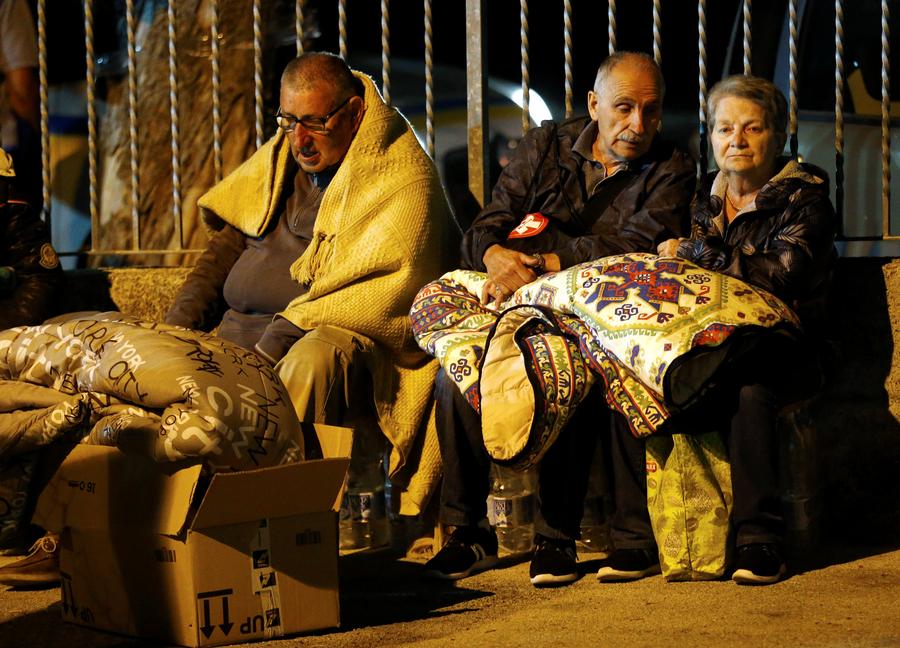Italy rescuers toil through night as death toll hits nearly 250
Updated: 2016-08-25 07:48
(Agencies)
 |
| People cover themselves with blankets as they prepare to spend the night in the open following an earthquake in Amatrice, central Italy, August 24, 2016. [Photo/Agencies] |
TOLL COULD CLIMB
The death toll rose to 159 a few hours later. With people still unaccounted for, the civil protection department warned it could climb higher.
Aerial photographs showed whole areas of Amatrice, last year voted one of Italy's most beautiful historic towns, flattened by the quake. Inhabitants of the four worst-hit small towns rise by as much as tenfold in the summer, and many of those killed or missing were visitors.
Amatrice's mayor, Sergio Pirozzi, said its best-known accommodation, Hotel Roma, which probably had around 70 guests at the time of the quake, had collapsed and only seven bodies had been found under the rubble.
The civil protection agency said it was trying to determine how many people were staying in the hotel.
Most of the damage was in the Lazio and Marche regions, with Lazio bearing the brunt of the damage and the biggest toll. Neighbouring Umbria was also affected. All three regions are dotted with centuries-old buildings susceptible to earthquakes.
Italy's earthquake institute, INGV, said the epicentre was near Accumoli and Amatrice, which lie between the larger towns of Ascoli Piceno to the northeast and Rieti to the southwest.
It was relatively shallow at 4 km (2.5 miles) below the earth's surface. INGV reported 150 aftershocks in the 12 hours following the initial quake, the strongest measuring 5.5.
Italy sits on two fault lines, making it one of the most seismically active countries in Europe.
The last major earthquake to hit the country struck the central city of L'Aquila in 2009, killing more than 300 people.
The most deadly temblor since the start of the 20th century came in 1908, when an earthquake followed by a tsunami killed an estimated 80,000 people in the southern regions of Reggio Calabria and Sicily.
